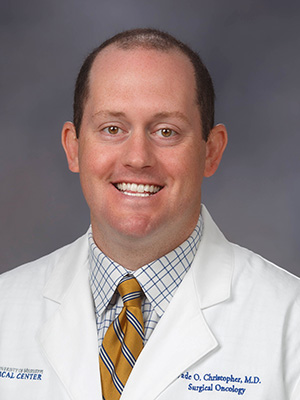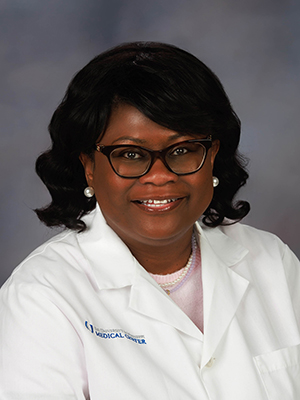UMMC experts: Breast cancer screening vital for younger women
While breast cancer most often affects women 50 and older, a growing number of younger women are diagnosed, statistics show.
The incidence rate of breast cancer in women younger than 50 has risen faster (about 1.4% each year between 2012–2022) than in women older than 50 (about 1% each year).

“This is a national trend,” said Dr. Wade Christopher, assistant professor of surgery and a specialist in the surgical treatment of breast cancer at the University of Mississippi Medical Center. “Breast cancer screening through self-examination, check-ups and mammography is essential for women’s health."

This makes breast cancer screening essential for early diagnosis, when survival rates can be as high as 99%, said Dr. Barbara Craft, professor of medicine in UMMC’s Division of Oncology, director of the Breast Cancer Treatment and Prevention Program and a clinical member of the UMMC Cancer Center and Research Institute.
“I think the most important thing is for women to make sure they are up to date on their screening,” she said. “There have been studies that show only about 65% to 70% of women are up to date on their screening mammograms.”
Knowing family history is also important, she said. “If you have a history of breast cancer and any other type of cancer, let your doctor know and ask if you should have genetic testing or genetic counseling.”
According to the American College of Radiology, mammograms are recommended every year starting at 40 for average-risk women. But for some people who may be considered higher risk, a formal risk assessment should be done at age 25, Craft said.
“We’re still seeing the ramifications of COVID,” she said, “when women delayed coming in for breast cancer screening. Some haven’t come in since.”
Women of any age should see their health care provider if they notice changes in their breasts, Craft said.
“Probably the most common thing people come in complaining of is a new lump, but there are other signs that are concerning for breast cancer,” she said. “It can be a lump in the breast, or it can be a lump under the arm because breast tissue extends from your collarbone to the underarm area. You should seek medical care if you have new redness of the breast, nipple changes such as a new inverted nipple, scaly or flaky skin on the nipple, or any sort of infection-type symptoms of the breast.”

Since breast cancer can also occur in men, it’s important for them to be aware of changes, too, said Dr. Tanya Moseley, professor of radiology.
“If we had a group of 100 people with breast cancer, about 99 of them would be women and one would be a man, so it is less common,” she said during a broadcast of “Live at 9” on WJTV. “If they feel something, they need not ignore it, and they need to come in as well.”
Breast cancer patients at UMMC have a roomful of doctors in their corner, Christopher said. Each week, experts in surgical oncology, medical oncology, radiation oncology, breast radiation, genetics and clinical trials meet at CCRI to collaborate on cases.
“We all work together,” he said. “We talk about each patient, review their test results, and develop a personalized treatment plan that gives them the best chance at recovery. It’s a team approach that ensures no detail is overlooked.”
Telehealth cancer support and education is also provided through programs such as Survivor University, a free online program for adults with a cancer diagnosis. Sessions are held throughout the year, and recorded classes on topics ranging from nutrition and wellness to side effects of treatment are available online.
Appointments may be made online or by calling 888-815-2005.
The above article appears in CONSULT, UMMC’s monthly e-newsletter sharing news about cutting-edge clinical and health science education advances and innovative biomedical research at the Medical Center and giving you tips and suggestions on how you and the people you love can live a healthier life. Click here and enter your email address to receive CONSULT free of charge. You may cancel at any time.



